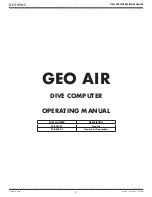
JVA ELECTRIC FENCE SYSTEMS
37
Standar
d R
equir
ements
10. Standard Requirements for Security
Electric Fences
10.1 Definitions
Connecting lead
An electric conductor, used to connect the energizer to the
electric fence or the earth electrode
Electric animal
fence
An electric fence used to contain animals within or exclude
animals from a particular area
Electric fence
A barrier which includes one or more electric conductors,
insulated from earth, to which electric pulses are applied by
an energizer
Electric security
fence
A fence used for security purposes which comprises an
electric fence and a physical barrier electrically isolated from
the electric fence
10.2 General requirements for electric fences
1. Electric fences shall be installed and operated so that they cause no electrical
hazard to persons, animals or their surroundings.
2. Electric fence constructions which are likely to lead to the entanglement of
animals or persons shall be avoided.
3. INSTALLERS/USERS SHOULD NOTE: WARNING: Avoid contacting electric
fence wires especially with the head, neck or torso. Do not climb over, through
or under a multi-wire electric fence. Use a gate or a specially designed crossing
point.
4. An electric fence shall not be supplied from two different energizers or from
independent fence circuits of the same energizer. For any two different electric
fences, each supplied from a different energizer independently timed, the
distance between the wires of the two electric fences shall be at least 2.5 m.
If this gap is to be closed, this shall be affected by means of electrically non-
conductive material or an isolated metal barrier.
5. Barbed wire or razor wire shall not be electrified by an energizer.
6. Any part of an electric fence which is installed along a public road or pathway
shall be identified at frequent intervals by warning plates securely fastened to
the fence posts or firmly clamped to the fence wires.












































